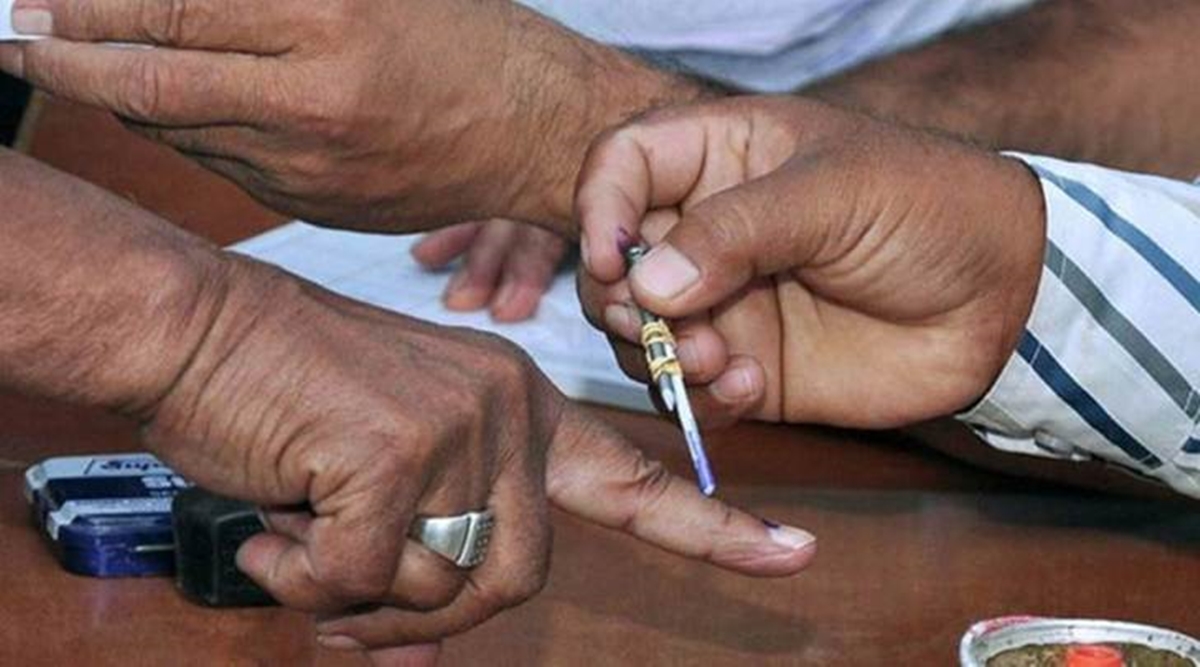 By the end of polling at 5 pm in Pune district, 44.87 per cent registered voters in graduates' constituency and 58.43 per cent in teachers' constituency had cast their votes.(Representational Image/File)
By the end of polling at 5 pm in Pune district, 44.87 per cent registered voters in graduates' constituency and 58.43 per cent in teachers' constituency had cast their votes.(Representational Image/File)VOTING for the graduates’ and teachers’ constituency seats went off smoothly in the five districts of Pune Division on Tuesday. The election – the first in the state since the Covid-19 pandemic hit the country – will decide the fate of two seats in the Legislative Council, one each from the graduates’ and teachers’ constituencies.
Despite the restrictions in place, and health concerns due to the ongoing pandemic, the voting percentage saw a considerable jump compared to the percentage recorded during the last election six years ago, said election officials.
By the end of polling at 5 pm in Pune district, 44.87 per cent registered voters in graduates’ constituency and 58.43 per cent in teachers’ constituency had cast their votes. The voting percentages in Pune district, during the last election held six years ago, were only 21.93 per cent in Pune graduates’ constituency and 50.31 per cent in the teachers’ constituency, said officials.
This year, enthusiasm about the Legislative Council election was much higher than usual, with candidates and political parties using novel methods to reach out to voters, and senior party leaders holding rallies in support of the candidates. The main electoral fight in both seats is between candidates of Maha Vikas Aghadi (the ruling alliance of Shiv Sena, Congress and NCP), and the opposition BJP.
The MVA has nominated Arun Lad for the graduates’ constituency and Jayant Asgaonkar for the teachers’ constituency, against BJP’s Sangram Deshmukh and Jitendra Pawar, respectively, for the two constituencies. The Maharashtra Navnirman Sena (MNS) has nominated Rupali Patil and the Aam Aadmi Party (AAP) has nominated Amol Pawar in the graduates’ constituency.
Vacancies in these constituencies were created due to the resignation of BJP state unit chief Chandrakant Patil, who won the Legislative Assembly elections from Pune city’s Kothrud last year, from the graduates’ constituency. The tenure of Dattatraya Sawant, who was representing the teachers’ constituency, ended in July this year.
A total of 4.26 lakh voters are registered to vote in the graduates’ constituency and 72,545 voters in teachers’ constituency in Pune Division. In both constituencies, Pune district has the highest number of registered voters, at 1.36 lakh and 32,201 voters respectively. In graduates’ constituency, Solapur district has the lowest number of registered voters, at 53,813, and in the teachers’ constituency, Sangli has the lowest number of registered voters at 6,812.
“The voting took place smoothly and the credit for this goes to the polling station staff, who really worked hard, and the health department staff, who ensured that the SOP to ensure safe voting was strictly followed,” said Pune District Collector Rajesh Deshmukh.
Deshmukh said that apart from campaigns by political parties and candidates, the Election Commission’s initiative to make the voting process easier also played a role in bringing out more voters this year.
“Since the polling stations are relatively far off, compared to those of state or parliamentary polls, due to smaller numbers of voters, many people find it difficult to locate the voting booths. This year, the Election Commission had made available a search option on the voters’ list so that they knew in advance where they had to go to cast their votes. We had given access to the system to candidates and political parties so that they could help voters with this information,” said Deshmukh.